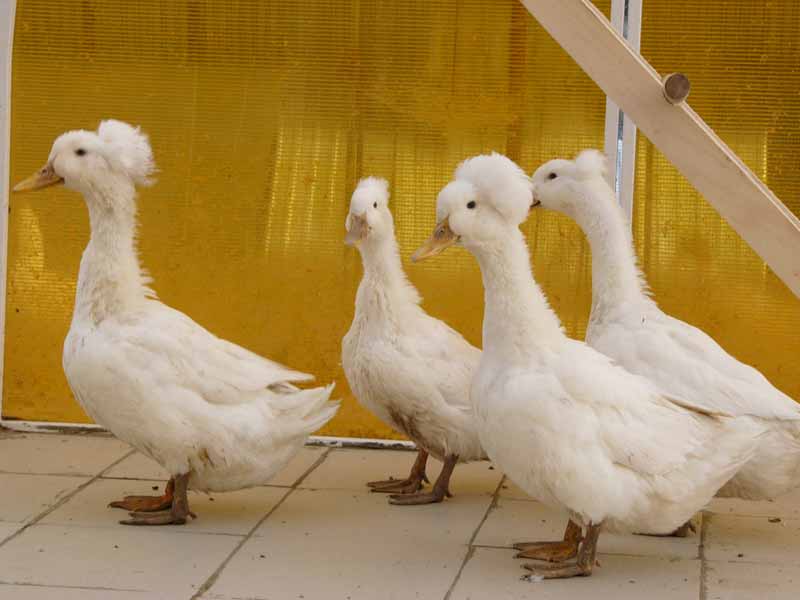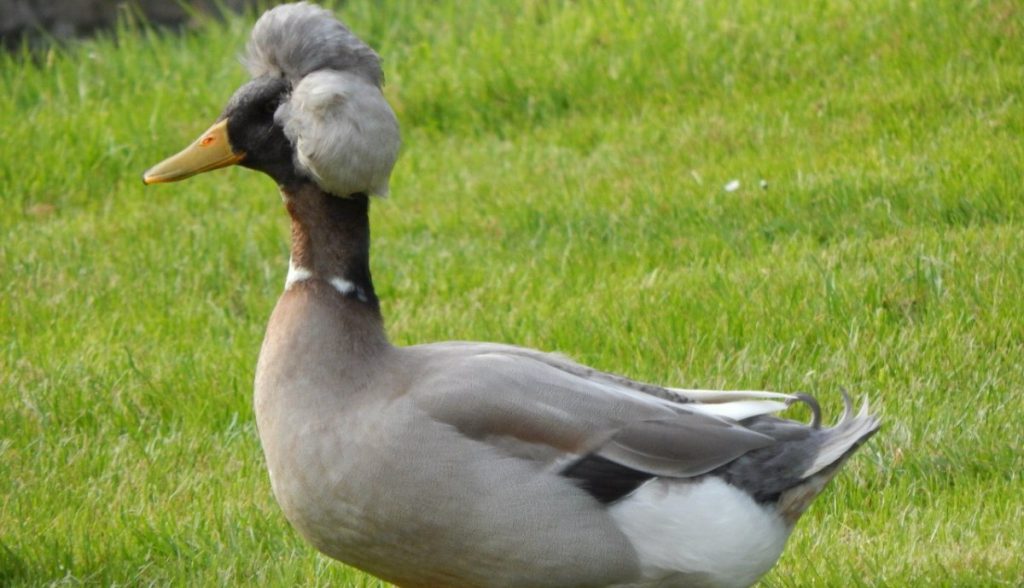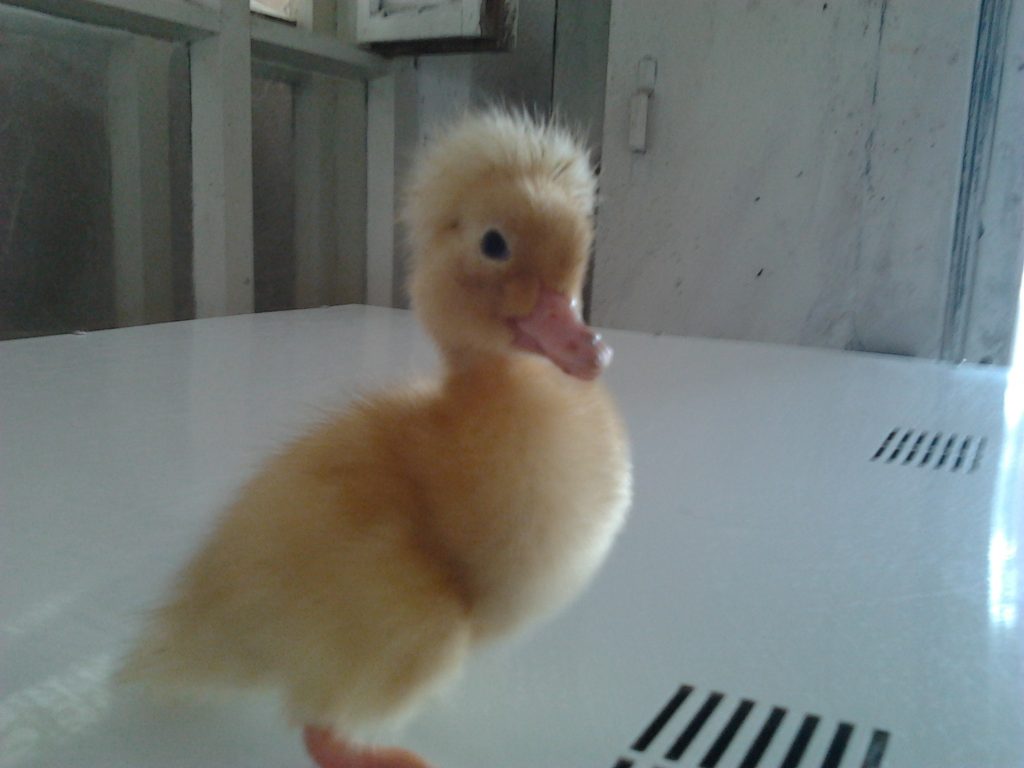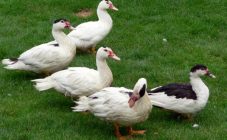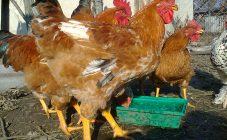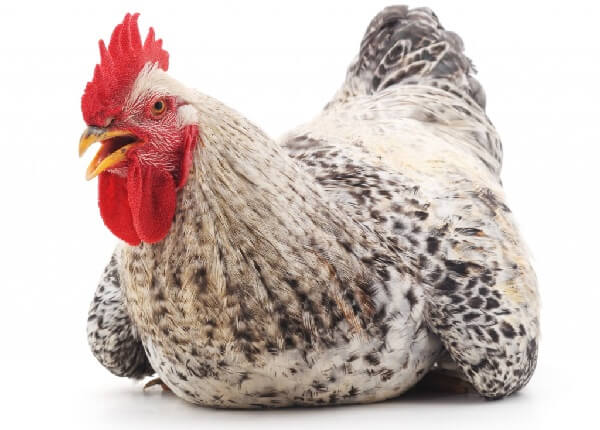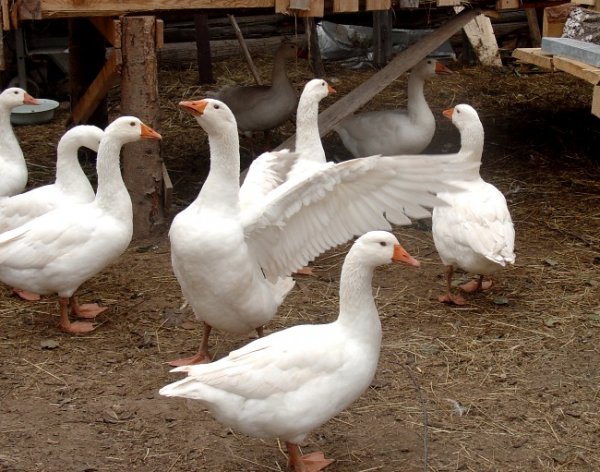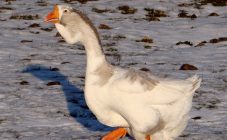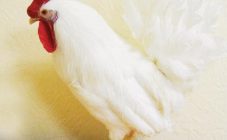Content:
The crested duck is considered one of the most beautiful domestic birds. The breed appeared in the 17-18th century when farmers crossed ducks brought from China with local breeds. A characteristic feature is the crown-like crest growing on the back of the bird's head (sometimes called a duck with horns on its head). The view is friendly and active. The voice of the ducks is clear and the sound is heard far away.
A duck with a tufted head has many subspecies. Among them is the merganser - a duck with ducks, domestic Russians, Dutch and Ukrainian. This variation is due to the fact that the duck is popular with poultry farmers and is widely used due to its unique appearance.
Russian crested duck
The tufted duck breed was one of the first to appear. It is believed that the Chinese crested ducks and European ducks were originally crossed. Due to its characteristics it is used as an ornamental bird.
A small description of this breed:
- very lush chest plumage;
- keel bone does not stand out too much;
- the front part of the body is slightly raised;
- the wings are long compared to other breeds;
- the color of feathers is dominated by black and white, but sometimes multi-colored individuals are also found;
- the beak is large and concave;
- there is a spherical crest on the head, the main feature of which is the light ebb of feathers;
- tibiae densely covered with feathers from top to bottom;
- feathers adjacent to the body shine and also grow densely;
- eye color is dark brown.
Ducks of this breed are friendly towards humans. Despite their kindness, they are very energetic and constantly on the move. The average weight of a male varies from 2.5 to 3 kg, and females rarely reach a weight of 2 kg.
It does not have a high productive capacity. The number of eggs laid in a year rarely exceeds 60 pieces. But sometimes there are individuals carrying up to 120 eggs. The duck rushes all year round, regardless of the season. The peak of activity falls in the first half of the year. Egg weight is kept at around 60 g.
Ukrainian Corydalis
This breed has a lot in common with its Russian brethren, but differs in little things:
- the neck is slightly bent;
- the head has a rounded-oblong shape;
- the eyes have a slight shine, the color is brown;
- the body is large, the weight is also consistent;
- there is a strip of light feathers on the neck, reminiscent of a necklace;
- the beak is medium, has a slight beak;
- legs are powerful, not too far apart;
- plumage dense, bright. Closely adheres to the skin of the duck.
The Ukrainian crested, like its Russian cousin, also does not weigh much. The weight of the drake ranges from 2 to 2.5 kg, while the weight of the female does not reach 2 kg. They also rush all year round. The weight of the egg is the same as that of the Russian breed - about 60 g. They are white, occasionally eggs with a greenish tint are found.
The breed is not meat, although sometimes it is eaten. Like the Russian relative, it is used for decorative purposes.
Bashkir crested
The breed got its name due to the fact that it was bred on the territory of Bashkiria. The breed has the following characteristics:
- as in the whole species, individuals have a large and powerful body;
- thoracic plumage dense, prominently protrudes forward;
- the wings are powerful, strong;
- the crest is the same as in other breeds;
- the color range is extremely wide. Ranges from black-brown (rarely red) to bluish colors.
The main reason for breeding this breed of ducks is that they mature very quickly and have tasty, tender meat. They are lighter than their Russian and Ukrainian counterparts. Only low productivity is an integral part of this subspecies. But it is more than offset by the beauty of plumage and affectionate character. The bird is used for decorative purposes, but can sometimes be eaten.
Care
Ducks are unpretentious in keeping. They eat any kind of food, preferably dry grasses and grains.
Duck dwellings must be clean and dry. Dirt and dampness cause discomfort to the bird and can cause illness. The floor of the house should be cast concrete or bricked. This will prevent moisture and dirt from entering. The floor must be covered with a mat. Sawdust, hay or straw are used for it. Everything is sprinkled in an even layer 5-10 centimeters thick. The exit from the house leads to a fenced-in aviary, where the bird spends most of the time.
If ducklings are kept in the house, there is an urgent need to maintain a high temperature. When breeding ducklings at home, heating equipment is required, which is installed in the house.
They feed the ducklings as soon as they hatch and dry out every two hours. For feed, you need to prepare porridge from crushed boiled eggs mixed with grain. Fresh greens are also necessary for chicks - any fresh grass is used.
Breeding and selection
The main problem facing breeders is the preservation of the tuft. In ducks, signs of crested and plumage quality often disappear. To prevent this, you need to ensure that both partners have crests. If at least one individual does not have it, half of the offspring will not have it either. The chance of losing an accessory is great, even if both crested ducks have a pure breed.
It is important to always select large individuals, without defects, in order to get healthy and fertile offspring.
There may also be other disadvantages if this rule is not followed:
- the crest can be small and hang to one side;
- the crest can be bifurcated;
- there may be a fold in the abdomen;
- critically large or small torso.
Different subspecies vary in the conditions of growing and keeping the young. The common thing is the possibility of egg incubation, adherence to the diet and the correct regimen in the duckling.
Pros and cons of the breed
Crested ducks have the following positive qualities:
- plumage beauty;
- unpretentiousness in the content and feeding;
- edible and soft meat;
- the ability to hatch eggs well.
A farmer who wants to breed this breed should also be aware of the shortcomings that are sometimes so acute in birds:
- low productivity;
- in ducks, the signs of crested often disappear, therefore it is necessary to conduct constant selection work to preserve it;
- it is difficult to find ideal individuals for breeding and obtaining purebred chicks;
- the average rate of egg production rarely exceeds 60 pieces per year from one duck;
- an urgent need to keep the bird's dwelling clean.
The decorative duck will be a good choice for decorating your yard. Its unusual appearance will add zest to any household.
